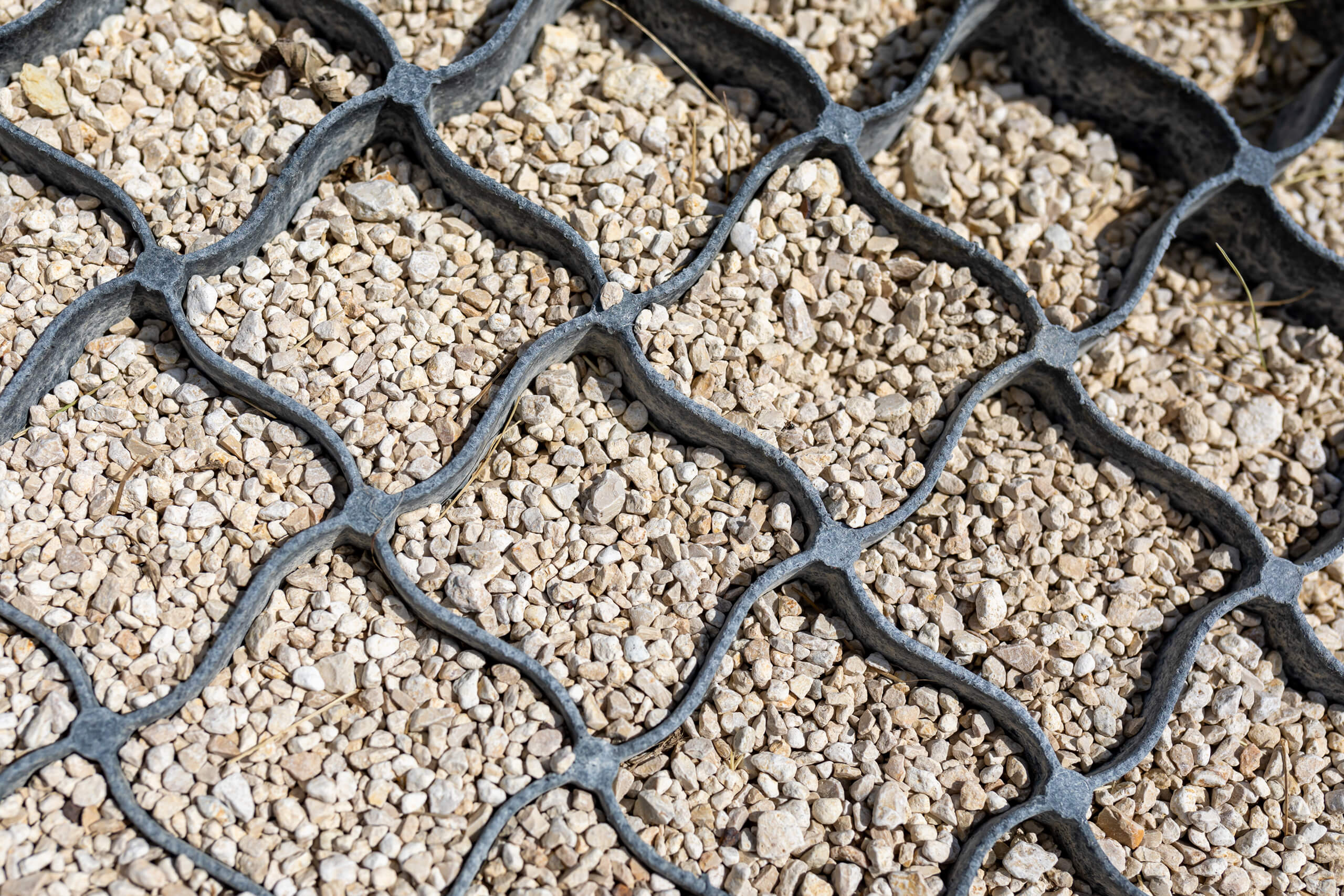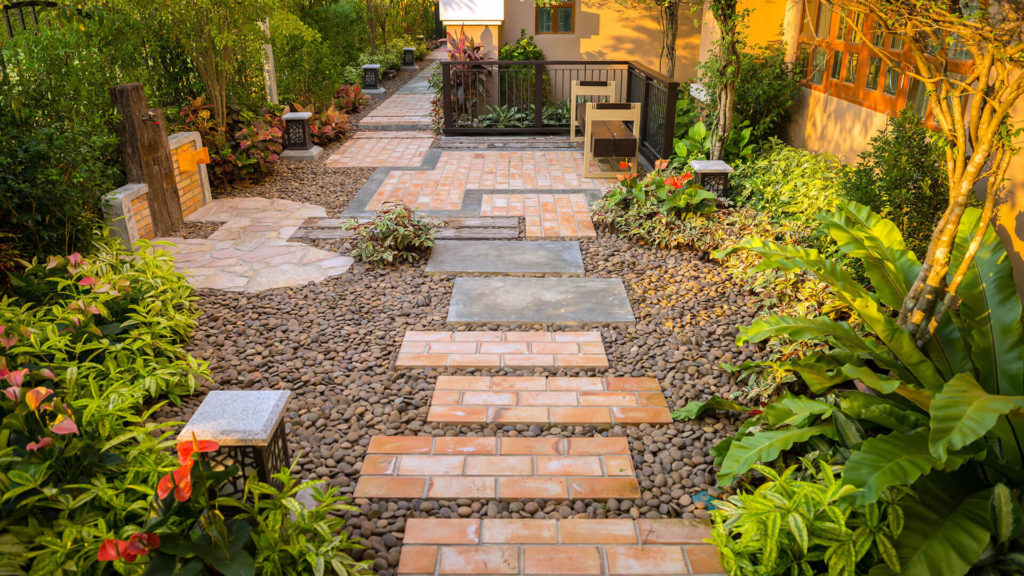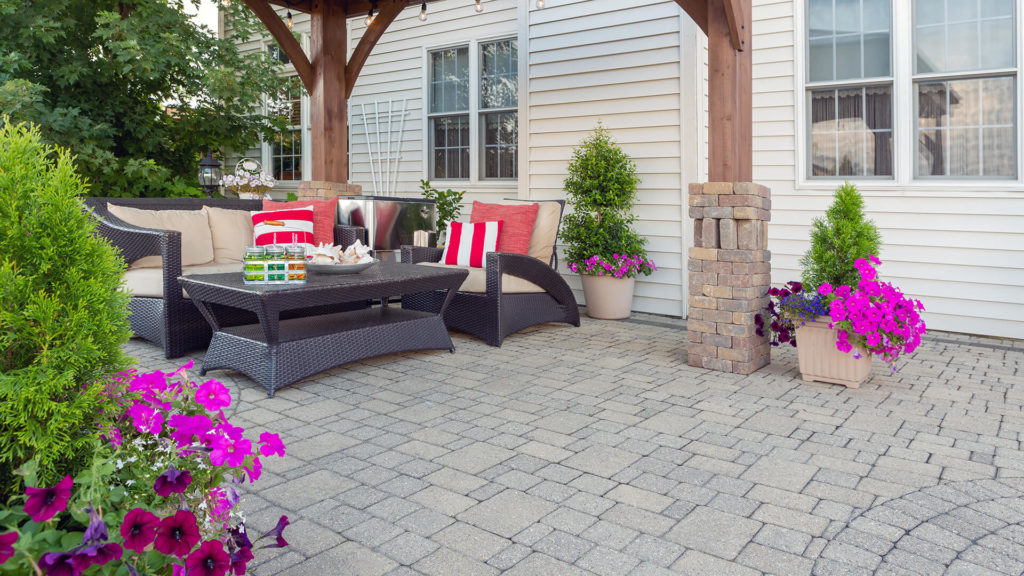Gravel is a timeless and versatile material for everything from driveways and walkways to patios and parking pads. But anyone who’s installed gravel knows it can shift, rut, or migrate over time, especially under the pressure of tires, feet, or water runoff. That’s where gravel grids come into play. This guide will explain what gravel grids are, when to use them, and how to choose the right one if you decide they’re a good fit.
What Are Gravel Grids?
Gravel grids are structural panels designed to reinforce and stabilize gravel surfaces. They form a grid of interlocking cells that hold the gravel in place and distribute weight evenly, creating a more durable and stable surface, which is why they’re also called gravel retainer or stabilizer.
Common uses include:
- Driveways and parking areas
- Garden paths and trails
- Sloped terrain to prevent erosion
- Wheelchair or stroller-accessible walkways

Pros & Cons of Using Gravel Grids
Benefits:
- Stability: Prevent gravel from shifting, creating ruts, or washing away.
- Support: Increase load-bearing capacity, ideal for vehicles and high traffic.
- Drainage: Help manage runoff and reduce puddling.
- Low Maintenance: Less raking and replenishing over time.
- Accessibility: More comfortable for walking, wheeling, or strollers.
Drawbacks:
- Cost: Grids add to the initial project expense.
- Installation: Requires preparation and levelling.
- Overkill: Not necessary for all projects, like decorative garden beds or light-use footpaths.
Types of Gravel Grids
By Material:
- Plastic (HDPE or polypropylene): Lightweight, affordable, often UV-stabilized.
- Recycled materials: Eco-friendly and functionally similar to virgin plastic.
By Structure:
- Interlocking panels
- Roll-out mesh systems
Special Features to Look For:
- Built-in weed barrier fabric
- Anchoring pegs or clips
- Load capacity ratings

Is it Required?
| Use Case | Grid Needed? | Notes |
|---|---|---|
| Light-use garden path | ❌ Maybe not | Compact base and edging may be enough |
| Sloped driveway | ✅ Yes | Prevents gravel migration downhill |
| Parking pad | ✅ Yes | Distributes heavy load |
| Decorative sitting area | ❌ Not needed | If no traffic, grid may be unnecessary |
Note: A well-compacted sub-base, typically made from road base or crusher dust, is crucial with or without grids.
Installation Overview
- Prepare the base: Excavate, install a compacted sub-base, and level.
- Install weed barrier (optional): Lay landscape fabric if needed to suppress weeds and improve long-term cleanliness. Some grids come with built-in membrane.
- Lay the grids: Interlock or align panels as directed by manufacturer .
- Fill with gravel: Choose gravel that suits your needs. Angular gravel (10–20 mm) is ideal for driveways and sloped paths due to its interlocking ability and stability. For low-traffic or decorative areas where barefoot comfort is a priority, rounded gravel may be preferable, though it may shift more easily.
- Compact: Use a light roller or vibrating plate to settle gravel.
Alternatives to Gravel Grids
- Heavy-duty edging systems
- Stabilized decomposed granite
- Resin-bound gravel (permanent but expensive)
Heavy-Duty Alternatives
For industrial or permanent installations, concrete-based systems like Grasscrete, Turfstone, or open-cell precast pavers may be ideal. These units are rigid and heavy, designed to support:
- Overflow parking lots
- Fire access lanes
- Commercial driveways
They allow gravel or grass to fill the voids, providing a balance of durability, drainage, and load-bearing capacity.
What to Look For
- Check load ratings for vehicles
- Look for UV resistance and weather durability
- Ensure compatibility with your gravel size
- Choose grids based on project scale and expected traffic
- Use quality gravel: clean, angular rock compacts best for structural areas
- Pair grids with proper edging and drainage planning
Summary
Gravel grids can dramatically improve the longevity and performance of gravel installations, especially where stability is key. Whether you’re building a durable driveway or a tidy path through the garden, knowing your options helps ensure long-lasting success.






